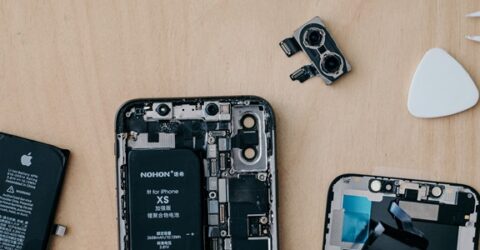How to get rid of unwanted electronics safely and responsibly
Before discarding old consumer electronics, it’s worth thinking about where they go – and the environmental impact

Such is the breakneck pace of technological development that the device you’re reading this article on probably wasn’t in your possession five years ago.
More significantly, it probably won’t be in your possession five years from now. A combination of built-in obsolescence and aggressive marketing campaigns will see to that.
If you’re reading this on an Apple computer or a Chromebook, you might not be aware that your device will be rendered obsolete whenever the manufacturer stops supporting it.
In the case of devices running ChromeOS, this is know as the Auto Update Expiration date, or AUE. It might be several years in the future, or it could be imminent.
Once it arrives, you won’t be eligible to receive software updates, which means the device will become less and less compatible/useful/functional with every passing year.
Even if your hardware isn’t rendered obsolete, it might start to overheat or suffer a hardware failure. Printers are notorious for developing faults soon after their warranty expires.
However, you can’t simply throw old consumer electronics in the bin.
There are various disposal options – but what happens to these devices once you discard them?
Out of sight, out of mind?
Smartphone retailers regularly offer discounts if you part-exchange an old handset, while there are plenty of companies who’ll buy anything from a monitor to a games console off you.
Second-hand items may be auctioned off, donated to charity or dispatched to dedicated recycling plants where their components are stripped out and plastics are melted down.
However, due to backlogs in processing the mountains of e-waste generated each year, this can take a long time.
An easier solution for less conscientious companies is to export old consumer electronics to countries where their valuable metals and components might be repurposed, or simply buried in landfill.
Other traded-in or discarded devices are resold on ecommerce platforms like eBay to entrepreneurs who repair them or cannibalise them for parts.
In one respect, this is recycling at its best.
In another, it’s not what consumers necessarily expect when they part-exchange an old device, sell it privately or leave it at the local recycling centre.
Don’t assume depositing a flickering monitor or sticky keyboard at your local tip necessarily helps the planet, either.
According to a report from a non-profit electrical recycling firm, 114,000 tonnes of e-waste is stolen each year across the UK.
A 2017 investigation into the fate of ‘recycled’ devices (using hidden trackers) determined that old monitors and printers often left recycling centres en route to developing nations.
Since those countries have laxer policies on the disposal of end-of-life electronics, they may still end up in landfill, poisoning the water table and contaminating the soil.
How can I reduce my environmental footprint?
The most obvious step is to turn away from the cycle of casual disposal and conspicuous consumption which sees people upgrading consumer electronics every year.
Is your old smartphone severely damaged or faulty? If not, keep it out of the e-waste merry-go-round by continuing to use it, which also eliminates the resources needed to manufacture its replacement.
Handing down older tech to children or relatives keeps it in use while reducing its need to operate perfectly. A two-year-old iPhone will be fine for a clumsy teenager.
Also disregard the notion that a slow computer needs scrapping. If it’s not been deprecated by the manufacturer, a factory reset could boost performance and extend its lifespan.
Protect devices, too. Fit rubber cases on smartphones to prevent breakages; install antivirus software on PCs to reduce the risk of virus destruction; turn monitors off to prevent screen burnout.
It may be possible to get a malfunctioning printer repaired, rather than throwing it away. Individual components in desktop PCs can also be replaced to keep the device operating almost indefinitely.
Plans to improve e-waste recycling by forcing retailers to accept and dispose of old consumer electronics in-store are likely to be enacted by 2026.
Until then, don’t assume a drive to your local tip spells the end of the road for your unwanted electronic goods…






